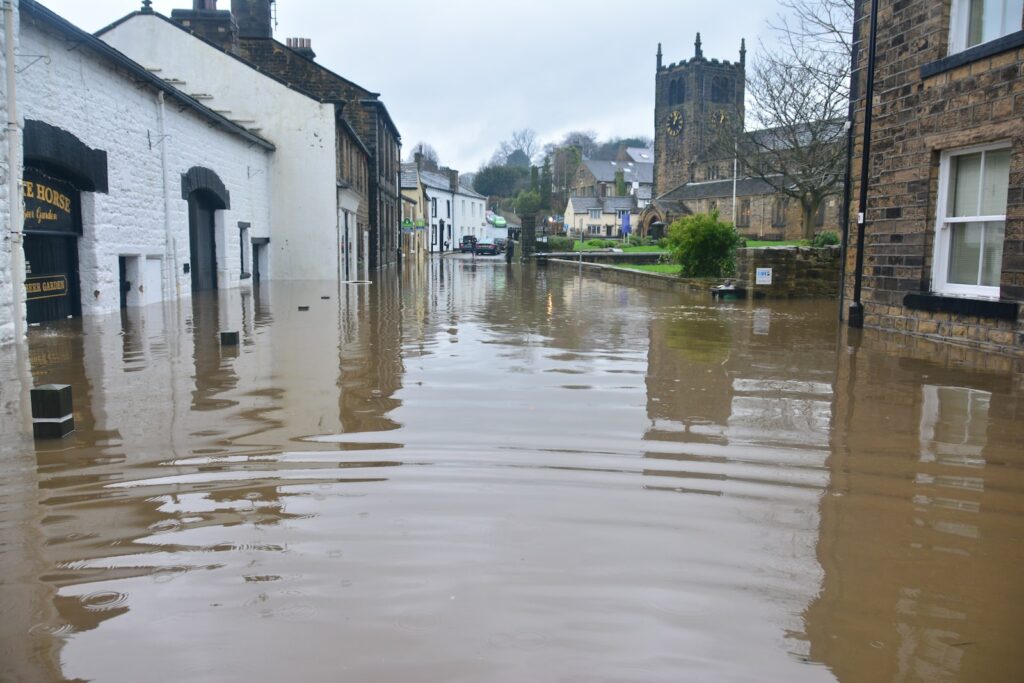Graeme Cooke, Commercial Director at DEF Software, breaks down the challenges facing the planning sector as the effects of the climate crisis become more frequent and explains how digital systems can be used to combat this.
It’s no secret to planners that the environment is changing and it’s affecting how many projects are undertaken. They have their eyes firmly set on the future, looking to net-zero and carbon neutral targets as tangible future goals to work towards.
Not only that, but new rules around biodiversity have become a priority and planning departments are navigating the vast array of admin issues pertaining to these, such as finding suppliers with approved Carbon Reduction Plans.
While it’s important to take steps to reduce future damage, this crystal ball approach can mean that we’re not mitigating the effects that climate concerns are causing right now before our eyes. The range of challenges affecting planners today is huge, and without effectively modernised systems in place, they may be difficult to address.
Changes to the environment and legislation
This year we have seen extreme weather events such as devastating flooding and unprecedented heat in the UK. During the summer the UK saw temperatures hitting forty degrees, damaging grassland, causing wildfires and it even resulted in the loss of life, as reported by the ONS. The impact of these events on our natural landscape is immense. Forecasts predict that these extremes may become our ‘new normal’, which will have a further adverse effect on our biodiversity and the way that our landscape responds to construction. This could lead to a change in where developers choose to build.

Recent legislation will affect the way that planners work. As of October, Secretary of State for Housing, Levelling Up and Communities, Simon Clarke has opened applications for councils to invest in building on local areas around England. The government is looking to increase commercial and residential investment by encouraging councils to take advantage of these ‘streamlined’ planning rules. Organisations such as the RSPB have voiced concerns that opening up investment zones could open the natural landscape up to further damage by removing legal protections for certain areas. In recent months, the details of any new planning legislation have been in a constant state of change. Planners have been working hard to keep up, but it can still be difficult for them to know which rules to follow when nothing is set in stone.
Planners can act today
These changes mean there are new elements to consider, to ensure that events outside of planners’ control do not affect their strategies. Right now, planners’ efforts are focused on legislation involving net-zero targets and obligations to reduce carbon emissions. Many house builders are already obliged to comply with regulations relating to this when constructing new developments, such as orders that new homes have to have heat pumps installed, a higher cost but low-carbon alternative to the standard gas boiler that around 85% of homes in the UK are still using. The government has also made funds available for the installation of heat pumps in existing homes until 2025. Plus, councils across the country are committing to net zero goals by 2050 or sooner. Planning departments will already be preparing for this.
However, we have reached a point where climate change is having a real, tangible impact on the UK’s landscape today. Yes, there should be a focus on future challenges, but things such as flooding and the urgent need to accommodate biodiversity are challenges that planners can focus on today. They also need to be prepared to offer advice to people responsible for leading construction projects.
One example of this is a focus on sustainable drainage and its ability to mitigate the effects of extreme rainfall. It can help to manage surface water quantity, overall water quality, and look at managing stormwater as close to the source as possible. Along the same vein, they can also consider stricter measures to prevent builds happening on sites where there is a flood risk. Advice like this is valuable for builders, and will lead to a more harmonious relationship between us and the changing environment.
Biodiversity is also of major concern at the moment, and advice on how to achieve this should be incorporated into every planning strategy, such as planting trees and including areas of wildflower land for pollinators.
Digital can make the difference
How can such a change in focus be achieved? Time isn’t on the planner’s side when it comes to taking action. That’s where digital systems can really make a difference.
End-to-end digital systems provide a ‘whole picture’ view of any given project at any stage of its timeline, from application through to build completion. This information can be available to all planning officers at any time. In turn, it can help local authorities to predict red flags or highlight areas of concern. This is particularly useful if the local authority covers a large geographical area, or has a lot of land likely to be earmarked for development.
Using these systems, planning departments can also easily add functionality that can better support new challenges such as sustainable drainage, finding biodiversity that can better handle heat and sourcing materials suited to flooding, or preventing construction on new potential flood risk sites. Modules can be added to assist in compliance with the Flood Water Management Act of 2010, or any new legislation that comes into force regarding extreme heat.
Suppliers of systems like this must comply with strict carbon reduction requirements and there has been an increased drive from the public sector in recent years to consider its impacts on the environment. Many local authorities are already taking ambitious steps towards mitigating the worst damage that the climate can have, but more can always be done.
You cannot underestimate the value of always having information available to the entire team. It sets them up to efficiently provide advice to builders, respond to legislative changes, and develop policies in line with protecting the environment of today.
Act now to address climate challenges
The crux of the matter is that setting targets and making plans is not enough for planners to be able to protect the landscape of their local area. Digital change is needed to make their jobs easier and their work more efficient. With that, planners will be freed up to focus on strategies that will help us adapt to the changing climate.
Photos by Chris Gallagher and Tom Rumble

















Leave a Reply